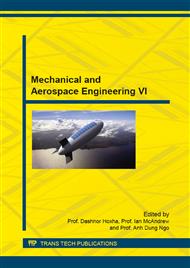p.372
p.377
p.384
p.390
p.395
p.402
p.406
p.410
p.419
Wear Behaviour of Cryogenic Treated M2 Tool Steel under Dry Sliding Condition
Abstract:
The technique of cryogenic treatment of cutting tools is an inexpensive permanent treatment process that improves the physical and mechanical properties of materials such as metals, plastics and composites. It promotes the transformation of the retained austenite into martensite at cryogenic temperatures and also facilitates the formation of fine carbides in the martensite, thereby improving the wear resistance.This paper compares the wear behaviour of hardened and triple tempered AISI M2 high-speed steel and the same steel that was hardened and triple tempered in conjunction with a deep-cryogenic treatment at 88K for 16 and 24 hours. Test materials were subjected to wear tests on pin-on-disc machine in dry sliding condition. Equations are developed for predicting the wear resistance of M2 tool steel material. The hardness data wear loss and microstructure throw light on the improvement in wear resistance property of the M2 tool steel.It is demonstrated that the properties of the cryogenically treated samples are superior to those of conventionally treated. 24 hours cryogenically treated hardened and triple tempered M2 tool steel shows excellent wear resistance properties over 16 hours cryo-treated M2 and conventionally treated M2 tool steel material.
Info:
Periodical:
Pages:
395-401
Citation:
Online since:
October 2015
Authors:
Keywords:
Price:
Сopyright:
© 2015 Trans Tech Publications Ltd. All Rights Reserved
Share:
Citation:


